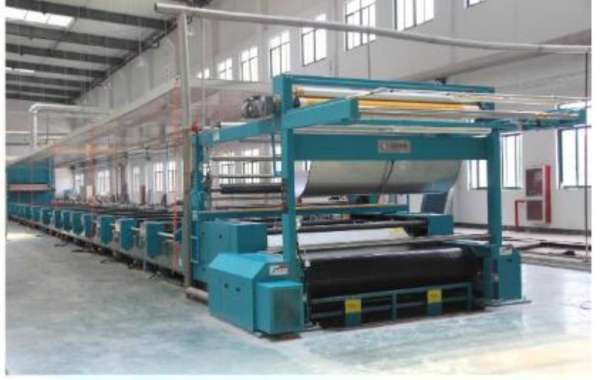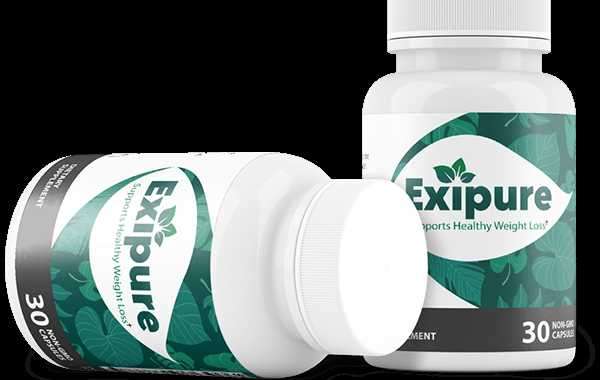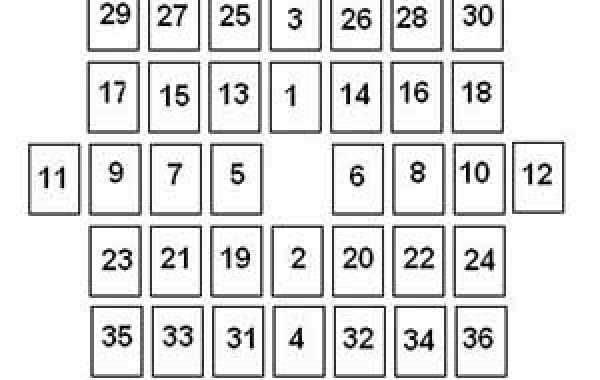Stenter's ceramic decals use general printing methods (flat, convex, concave), and the printing film thickness is only 5-10 microns. On ceramics, the screen printing method is very suitable to achieve the three-dimensional effect of the pattern, the bright printing, and the durability without decolorization. The screen printing equipment is relatively simple, and the operation technology is easy to master. In the domestic and foreign markets, ceramic products decorated with screen printing are gradually replacing products decorated with ordinary printed paper.
On-glaze decal screen printing process
- Fabrication of wire mesh frame
The screen frame can be made of materials such as wood and aluminum alloy. The wooden screen frame needs to use high-quality wood to effectively prevent the screen frame from being deformed when it is exposed to oil. The size is generally 55cm×35cm, and the frame wood size is 4cmx2.5cm.
- The choice of screen is 250 mesh nylon screen.
- The fine mesh can be stretched manually (inlaid method) or machine stretched (adhesive method).
- Plate making
According to the pattern designed by the designer, such as relatively simple block surface, line, etc., it can be drawn and color-separated on ordinary transparencies. The lines of the pattern are required to be crisp, neat, and meet the requirements of the design. When drawing the pattern, the ink line should be thick, so that the shading power is strong and the printing effect is good. Otherwise, defects such as disconnection and poor color leakage will occur. Such as the design of the pattern is relatively fine, or into a set of tea sets, you can use the photo-engraving method for plate making. Remember to draw a "+" rule line when making a plate, as a benchmark for printing.
For screen printing plates, diazo photosensitive glue can be used. The blade of the glue squeegee is at a 45° angle. The smaller the squeegee angle, the thinner the photosensitive liquid will remain on the screen. When applying photosensitive glue, apply both sides and pay attention to the coating evenly. The coated screen should be dried at an appropriate temperature, and the dried screen can be delivered to the printing plate.
The light source for the printing plate can be 10-15 40W row-mounted fluorescent lamps, the lamp distance is 25-30cm, and the exposure time is 5-7 minutes. After exposure, the screen plate is washed and developed with warm water until it becomes clear. If there is any defect, it can be patched and repaired. The repaired screen printing plate can be delivered to the printing process for screen printing of decals.
- Scratch
A right-angle polyurethane squeegee can be used for squeegee printing, and the part of the squeegee strip where the handle is exposed is preferably 2-3 cm. It is best to use both hands to operate the squeegee for squeegee printing. The temperature of the printing environment is generally between 20°C and 25°C, and the relative humidity should be maintained at about 70%.
What are the printing materials of Flat Screen PrinterThe printing material of screen printing ceramic on-glaze decal paper is a special printing material. In order to distinguish it from other types of printing materials, it is usually called "screen printing porcelain ink".
Screen printing porcelain ink is an indirect printing material made of a mixture of coloring agent (metal oxide) and flux (low melting point boron, lead glass body), adding an appropriate amount of binder, and repeated rolling and grinding by an ink roller. It must be fired at a high temperature of 780℃~830℃ to show its specific color and be closely integrated with the ceramic glaze.
Screen printing porcelain ink also has selective absorption and reflection of light. Chromophores made of different metal oxides also have different absorption and reflection of light, so they present a variety of different colors. For example: copper oxide is green, cobalt oxide is purple, lithium oxide is dark red... Therefore, the color of screen printing porcelain ink is very wide.
Screen printing porcelain inks, like ordinary color printing inks, also have the three basic elements of color, lightness, and saturation. There are also light, dark, dark, and light points. However, the compatibility of silk-screen porcelain inks is far inferior to that of ordinary color printing inks. Often due to improper mixing, chemical reactions occur with each other during the baking process, showing extremely undesirable colors, and even lead to undesirable colors.
Phenomena such as popping flowers and gold washing make the ceramics lose their artistic value. Although some screen printing porcelain inks can be mixed, they are also restricted by certain conditions. Usually, they are uniformly mixed in proportion to a special color in advance, and then printed, the color rendering effect is better. For printing using the principle of three primary colors like color printing, it is difficult to achieve the color effect required by the original manuscript. Taking human skin color as an example, it is better to mix the dark yellow and nail red of the screen printing porcelain ink into a special skin color for printing. If the general color printing is used for multi-color printing, not only one more set, but also it is difficult to get the ideal skin color. This is because the screen printing porcelain ink has strong covering ability, poor transparency, and different co-solvents, which makes the baking color temperature different, and it is formed by chemical reactions between each other during baking. This is also one of the reasons why screen printing ceramic on-glaze decals cannot currently be printed using the principle of three primary colors.
Knowing the above principles, when designing manuscripts, photographing color separation, and preparing special color printing materials, try to avoid color reset (overlap) and use color juxtaposition, or use flat silk combination to reduce ink layer overlap Thickness (must be flat-printed first, and silk-printed later, which can reduce popping and avoid moiré patterns). Even if the color overlap is not necessary, in addition to considering the chemical reaction between each other during baking, it should also be considered to balance the color temperature between the silk-screen porcelain inks as much as possible. When performing color stacking, the lower temperature should be printed on the lower surface, and the higher temperature should be laminated on the upper surface. This is because during the firing process, when the low-temperature silk-printed porcelain ink layer begins to melt and evaporate gas, the high-temperature silk-printed porcelain ink layer superimposed on it still has unmelted particle gaps, which can allow the lower screen-printed porcelain ink layer to be unmelted. The molten gas passes through to avoid popping.
For the same silk-screen porcelain ink, the firing temperature is different. Light-colored porcelain ink contains more fluxing agent, but the color firing temperature is lower, and the darker colored porcelain ink contains less flux, and the color firing becomes color. The temperature is too high. Different fluxes have different pH values, which have a greater impact on the color development of the color burn. For example, the golden red material with gold as the coloring agent, if the alkaline flux is used, the color burnt effect is good. , It is red and bright. If acidic flux is used, the color effect of the color burnt is poor, and the color is purple and dark.
The purpose of adding flux to the screen printing porcelain ink is to increase the brightness of the pigment, to make the color after the baking flower burnt more gorgeous, and to make the screen printing porcelain ink blend with the ceramic glaze after the baking flower color burning.
The color agent particles of screen printing porcelain ink are coarser than ordinary color printing oil pigments and have a larger specific gravity. This has a great impact on improving the quality of screen printing ceramic glaze decals, especially for photographic dot plates. The number of outlets is difficult to reproduce. Although the fineness index of screen printing porcelain ink stipulates: its particle fineness shall not be less than 92% below 15m, and the largest particle shall not exceed 30um, it is still relatively difficult to copy fine originals. During plate making, in order to avoid the jagged edges of the pattern, it is required to print the printing plate according to 1:4, that is to say, the base plate with a 100-line photographic screen and a screen must be printed with a silk screen with more than 400 lines. If the number of threads is higher, the aperture of the screen used will be smaller, and the number of porcelain ink particles that can pass is also less. Not only is the reproduction ability of low-number dots poor. And the pattern is faint and the edges are hairy. In order to improve the quality of printing, the requirement for screen printing porcelain ink is that the finer the particles, the better. During printing, the remaining porcelain ink in the screen should be removed after a period of printing, new porcelain ink should be replaced, and the printing plate should be cleaned to remove the particles embedded in the mesh to ensure that enough porcelain ink particles are missed. On the substrate.
The binder of the screen printing porcelain ink is composed of a solid resin and an organic solvent that dissolves the resin. The main requirements of the screen printing porcelain ink for the binder are good film formation, low decomposition temperature, no bursting, no gold washing, no wire drawing, good leveling performance, and suitable drying. When selecting the bonding material, in addition to paying attention to the above requirements, there is another requirement to not dissolve the flower-bearing film. The decorative film of screen printing ceramic on-glaze decals is a polyvinyl chloride film with a thickness of only about 0 mm. When choosing an organic solvent, try to choose an organic solvent with a small alcohol content. If the alcohol content is too high , It is easy to alcoholyze the embossed film and cause corrosion, which affects the quality of printing








